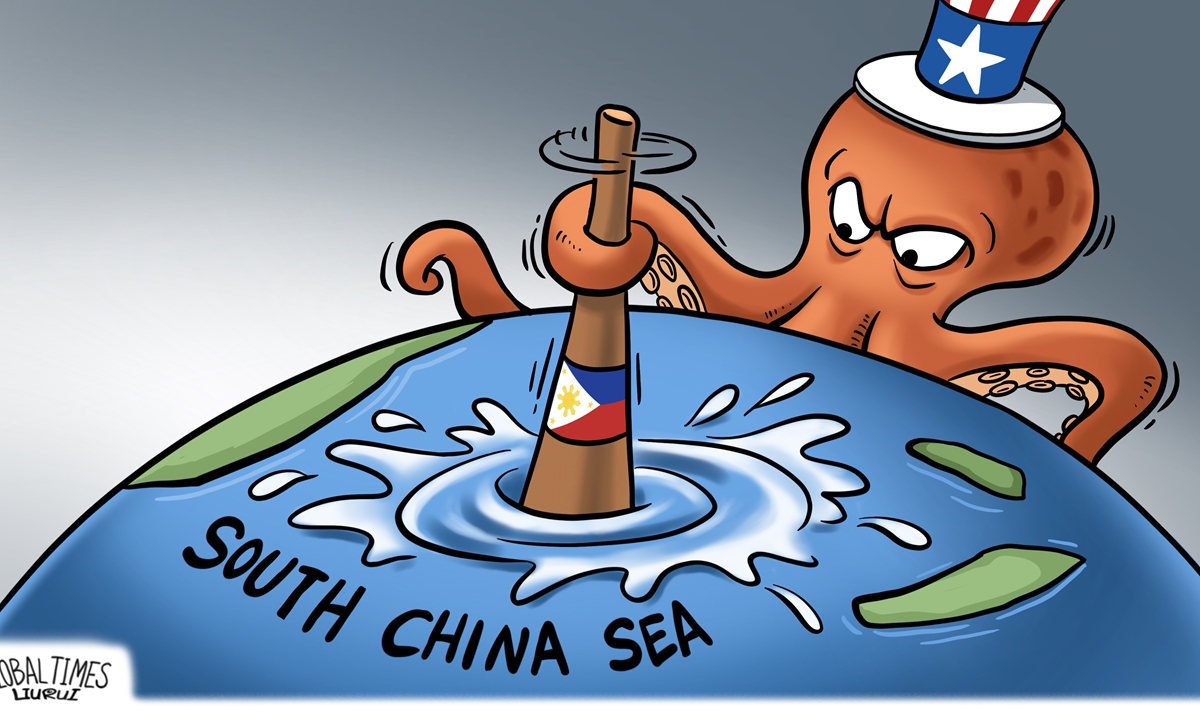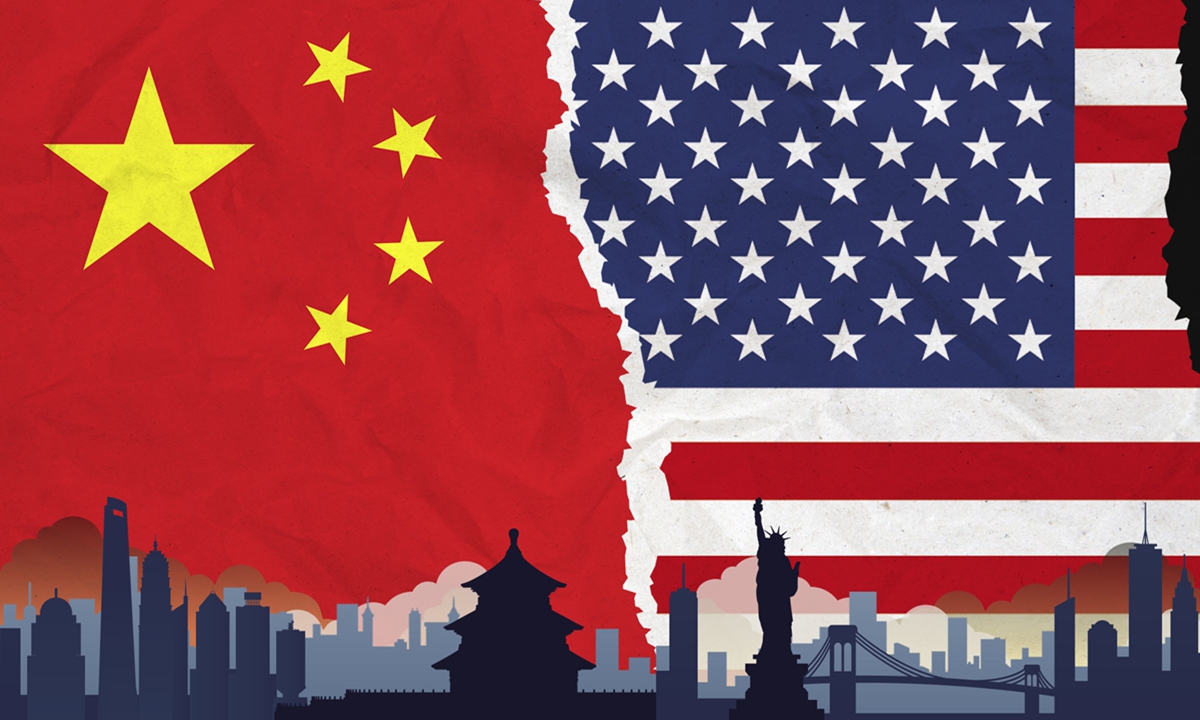
Illustration:Liu Rui/GT
On April 11, the leaders of the US, Japan and the Philippines met for the first summit between the three countries, announcing that they would enhance security cooperation and establish a new dialogue mechanism including the "trilateral maritime dialogue."At the summit, they launched attacks and defamation against China on the South China Sea issue, ending up with a joint statement based on the narrative of great power competition and bloc confrontation stirred up by the US.
Prior to the trilateral talks, in a meeting with the leader of the Philippines, the US once again brought up the US-Philippines Mutual Defense Treaty to coerce China regarding the South China Sea issue, declaring its "unbreakable alliance" with the Philippines. The US and Japan, both explicitly and implicitly, are using the Philippines as their "proxy" against China, pushing it to the frontline of disputes in the South China Sea.
In fact, the three countries had been deepening their maritime security cooperation before the trilateral meeting. The US and the Philippines have been holding continued discussions on their alliance obligations and roles in maritime incidents. To meet the demands of the administration of President Joe Biden, the Philippines gradually specified its obligations to the US under the Mutual Defense Treaty. In return, the Philippines also hoped the US would clarify the specific circumstances and conditions under which the treaty would be triggered in the South China Sea, as well as the military and intelligence support the US could provide.
The US shadow is clearly visible behind the Philippines' continuous infringement and provocation in the South China Sea. And the government of President Ferdinand Marcos is also using the disputes to test the extent to which the US will fulfill its security commitments to the Philippines.
Apart from the efforts to improve information sharing mechanisms, Japan and the Philippines agreed that Japan would provide the Philippines with multiple patrol vessels, drones, and radar equipment for maritime monitoring. The cooperation between the two countries' coast guards has also laid the foundation for joint patrols and exercises under the framework of the "trilateral maritime dialogue" between the US, Japan and the Philippines.
In their joint statement, the US, Japan and the Philippines vilified China for "dangerous and aggressive behavior in the South China Sea." However, it is ironic that the US has over 700 military bases globally, over 300 of which are located around China. In 2023 alone, the US conducted 107 large-scale exercises and drills in the South China Sea and surrounding areas, with its carrier strike groups and amphibious groups entering the South China Sea eight times. So who is really posing a threat to regional peace and stability?
While the US-Philippines Mutual Defense Treaty is a product of the Cold War, the disputes between China and the Philippines over territorial sovereignty and maritime jurisdiction in the South China Sea are bilateral, and do not concern the US.
By repeatedly citing the Treaty to endorse the Philippines' illegal claims, the US has encouraged it to take risks in the South China Sea, leading to negative consequences. For example, the US encouraged the Philippines to repair its grounded vessel at Ren'ai Jiao, and even dispatched military aircraft to support the Philippines at sea. These actions have resulted in the disruption of some agreements and understandings once reached between China and the Philippines.
The core of Washington's control over the direction of the US-Philippines alliance is to prevent Manila's diplomatic decisions from deviating from US strategy. By frequently bringing up the US-Philippines Mutual Defense Treaty, the US continues to pacify the Philippines. This kind of reassurance will also suppress the Philippines' motivation to seek other options.
Within the Philippines, there are rational and pragmatic voices: Imee Marcos, chair of the Philippine Senate Committee on Foreign Relations and sister of President Marcos, recently stated that "emotion rather than reason" is leading the Philippines down a dangerous path.
In an exclusive interview with the Global Times, former Philippine president Rodrigo Duterte also pointed out that if the Philippines sides with the US, "then everything becomes blurry in our relations with China and the rest of the ASEAN countries."
In the groundless narrative presented in the joint statement from the US, Japan and the Philippines, the so-called arbitral tribunal ruling on the South China Sea in 2016 has already "clarified and resolved the legal disputes in the South China Sea." What remains unresolved is the issue of "China bullying smaller countries," and the Philippines needs the help of the US, Japan and other countries to deal with this.
But it should be noted that attempts by relevant countries to impose solutions to the South China Sea issue through illegal and ineffective arbitration are doomed to fail. The increasing presence of "mini-multilateral" security mechanisms related to the South China Sea will squeeze the political space for China and relevant parties to resolve disputes through direct negotiations. It will also undermine efforts by China and ASEAN members to maintain regional peace and stability, which has lasted for over 30 years since the Cold War, leading to a more complex and intractable maritime situation.
Therefore, countries in the region must remain sensible and highly vigilant.
The author is deputy director of the Institute of Maritime Law and Policy at the China Institute for South China Sea Studies

